Talk to one of our Senior Strategists
Send us a message, and we’ll get back to you shortly.
Join us on Thursday, June 5th, at 12:00 PM (GMT +3) for our next workshop on overcoming common data integration challenges for B2B Marketers. Read more.
The struggle of “have I covered all relevant keywords for my business” is totally real. 👈
Establishing which keywords to include is one of the main activities at the start of setting up a campaign and adding new keywords remains a core-activity throughout the management process of a Google Ads account.
But it’s so easy to miss relevant searches, not have enough time to create new ads for new products, or lose control over what’s out of stock and re-stocked.
Google has an ad format – DSA, short for Dynamic Search Ads, that offers some assistance when combating this struggle. Keep reading and you’ll get a comprehensive overview of everything regarding Dynamic Search Ads from “What?” to “Why?” and of course “How?”.
DSA = Dynamic Search Ads is a dynamic ad format that enables you to catch searches relevant to your website where your “regular” keyword targeting might run short.
Which searches are “caught” is defined by the titles and frequently used phrases on your website. So, if someone searches for a term closely similar to any titles or frequently used phrases on your website, they would be shown an ad with a dynamically created relevant headline and the same landing page that Google “found” this title or relevant phrase from.
In Dynamic Search Ads, the only ad assets that you can “influence” are the two descriptions (and extensions). When creating a DSA ad, this is what you’ll see:
The previews for desktop and mobile:

Here’s an example of a DSA ad on Google’s Search Results Page:

DSA = Dynamic Search Ads can be utilized in several ways:
1. Dynamic Search Ads’ most common use is for e-commerce sites to capture searches and show search ads for specific product names (and product ID codes). If you have a website with a lot (1000, 10 000, 100 000, …) of products, naturally you won’t be adding all product names as keywords.
If you are, please message us, we’d like to meet you and observe your superhuman abilities of managing an account like that.

If you are taking it easy and have accepted the fact that you are indeed not a superhuman, DSA is likely the way to go for making sure your Google Ads search campaigns trigger for search queries that include your product names.
Searches like this are already pretty low-down in the funnel, meaning the person is already quite likely to make a purchase. So you’d most likely want to make sure your ads are shown to the user when such a search occurs.
*** Another not so teeny-tiny benefit in favor of the DSA format is that often product names can be quite long. But regular Expanded Text Ads (or Responsive Search Ads) have a character limit of 30 per headline. So, in many cases, it would be impossible to fit the whole product name in the Headline. But DSA is not limited by 30 characters.
This OPI nail polish name “OPI Somewhere Over the Rainbow Mountains” would definitely not have fit in the Headline of an Expanded Text Ad (or Responsive Search Ad).
2. The second, already a little less common use for DSA is for specific extra-relevant landing pages on your website.
Let’s say you’ve created a landing page optimized for a specific keyword or few. This keyword might be quite broad and have very tough competition (high cost-per-click). So when you have just added the phrase/word as a regular keyword, it might also capture a lot of irrelevant searches. And you keep having to comb through your Search Terms Report and add negative keywords.
While having this highly relevant keyword (even if it is broad and the competition for clicks is tough) in your account might still be necessary, you might really benefit from creating a DSA ad for this specific landing page as well.
This way, Google should understand the context of your landing page and show ads for only relevant searches.
But the CPCs were really high to stay competitive and amongst the top positions (and we didn’t see desired results from lower ad positions). In addition to manufacturing-related searches, these keywords also captured searches like “Game of Thrones production schedule”, “film production schedule”, “series shooting production schedule”, etc. (And weirdly enough, people kept clicking on our “Production Scheduling Software” ads.) While we obviously added these as negative keywords, new ones just kept popping up.
When we created a DSA ad where the only target was this same specific production scheduling themed landing page we hardly ever saw any irrelevant searches in the Search Terms Report anymore.
Result?
Our ad was pretty much only being shown for relevant searches → avoided spending our budget on irrelevant clicks → more relevant traffic to the website → higher conversion rates from the traffic → more conversions. Yay! And I didn’t have to go through the Search Terms Report as often. Double-Yay!

3. The third really good use for Dynamic Search Ads is finding new keywords to add to your account.
(Because if you add a keyword in your account → have designated ads for it → the ad relevance is higher → quality score is better → CPC is lower → you invest your budget more efficiently → more revenue)
Options how you could start your advertising efforts:
1. Spending hours and hours (days and days) adding all the possible keywords you could come up with only to find out that most of them have hardly any search volume and ending up with a hard to manage account structure.
2. Adding main top keywords (with proven volumes and performance) in your account and creating DSA ads to capture other relevant searches. Then, analyzing the performance of different search phrases in the DSA campaign/ad group and adding the best-performing ones as keywords only after they have already proven to be useful.
It’s up to you which approach you prefer.
Dynamic Search Ads don’t show URL paths. That’s just how it is and we shall deal with it.

Dynamic Search Ads use the content of your website to match your ads to searches. There are a few ways of defining or “limiting” this targeting. When you create a campaign that will include Dynamic Search Ads, you need to take the first step of defining how to target the dynamic search ads.
When setting up your campaign, the only difference there is compared to a regular search campaign is that when creating the search campaign, you need to click “Show More Settings” below the “Networks” section:
Then tick the checkbox “Enable Dynamic Search Ads for this campaign“. Enter your domain, select the language in which you want to create your dynamic search ads in and finally, select the targeting source.
The targeting source that you choose here determines how you define the webpages which will be used for targeting your ads.
Once you have chosen all campaign settings properly, you can move on to creating ad groups. As mentioned before, DSA ad groups use dynamic ad targets instead of keywords. There are three options to choose from:
Here are the options explained in more detail:
1. Categories recommended for your website:

These are Google’s automatically created categories based on how it “understands” your website. If your website is built in a clear and understandable way (for Google), then it should work well. However, if the structure of your website is confusing for Google, it might be safer to use the next targeting option – specific landing pages. 👇
2. Specific landing pages:

This option enables you to use rules for targeting an individual page or specific sets of pages on your website.
a) Insert specific URLs that you want to target:
b) Create a rule for choosing a specific set of pages:
3. All webpages:

This is the most broad out of all three targeting methods as you’ll allow Google to choose from all pages of your website when trying to match searches to your ads.
4. “Page feed” defined targeting:
If you chose “Use URLs from my page feed only” or “Use URLs from both Google’s index of my website and my page feed” when creating your campaign, then you can “use a spreadsheet of URLs for the most focused targeting. You can then target your entire feed or parts of it. For instance, you can label pages about “products with 4-star reviews” or “hotels with lots of availability” and target URLs with those labels only.” (Source)
*** IDEA: Targeting all URLs (with the “Specific webpages” targeting) that you have in your standard ad groups. This way you can increase traffic to the pages that you have already deemed targeting-worthy and make sure you’re not missing out on any suitable traffic (due to not having the relevant keyword(s) in your account).
*** Do consider if you’d need to add the existing keywords that you have in your standard ad groups as negative keywords to the DSA ad groups.
While DSA is a powerful tool for capturing relevant traffic to any of your pages, there are also pages that you most likely don’t want to show ads for.


*** You can also avoid showing ads for products that are out of stock by using the feed targeting method with labels for in-stock items’ landing pages.
Once you have created the targeting for your ad group, you’ll move on to creating ads (and extensions).
The only assets you can define yourself in dynamic search ads, are the two descriptions. All other parts of the ad will be created dynamically.
After you have created a few ads (to test different ad copy), you can create extensions highlighting what is most relevant to this specific ad group’s targeting.
There are two ways to have dynamic search ads in your account:
The only difference with “DSA Campaign(s)” is that you’d have the DSA ad group(s) in a campaign that has other “standard” ad groups as well.
It’s important to make sure that this “hybrid” campaign still includes keywords (ad groups) with similar intent, though.
For example, for e-commerce businesses, it would most likely make sense to combine DSA with product keywords and/or keywords for the brands that you sell. (NB! Not your own brand keywords, as these almost always perform way differently than other more generic keywords in your account).
When creating a DSA ad group in a campaign that also includes standard ad groups, make sure to choose the “Dynamic” ad group type.

This should be the default ad group type in campaigns that have the “Enable Dynamic Search Ads for this campaign” checkbox ticked.
The first prerequisite for any enjoyable analysis is having a (campaign and ad group) structure that is clear, logical and easy to understand.
Take a quick second to think yours through and minimize any confusion headaches in the future. So have a coffee and think about your Google Ads account structure a bit. As one does. Right?

Once you have a clear structure set up and your Dynamic Search Ads are running, it’s time to monitor and optimize them to make sure they’re not running too fast towards mindlessly spending your budget.
Action plan follows:

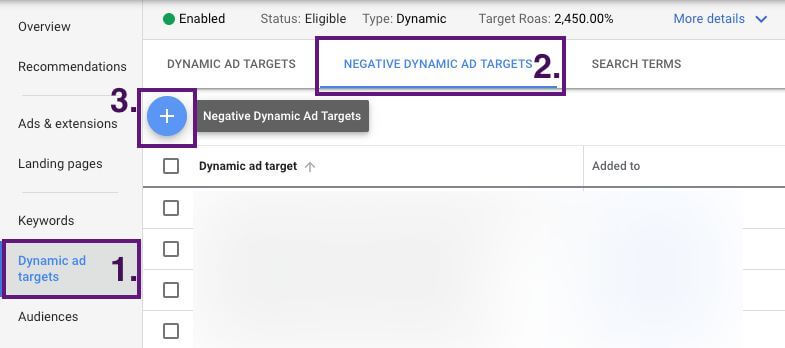
So there you have it – the essence of Dynamic Search Ads thoroughly explained.
Here’s some additional reading on the subject:
The key takeaway should be that Dynamic Search Ads are a great way of ensuring maximum coverage of relevant searches. But, they definitely require monitoring and optimizing to keep the investment of your Google-dollars under control.
Let us know if there’s anything we missed and you have some other clever ways of utilizing DSAs.
Have you faced any challenges? Did you overcome them?💡
1 Comment. Leave new
Great content! Super high-quality! Keep it up! 🙂